What’s on Your Nightstand?
 By Lois Winston
By Lois Winston
I’m an extremely eclectic reader. There are a few genres I don’t read because they turn me off. My apologies to the vampire and werewolf fans out there, but I just don’t get the allure of falling for someone who wants to drain me of my blood or sup on my entire body.
I used to read a wide range of science fiction and fantasy, everything from The Lord of the Rings Trilogy to Arthur C. Clark’s Space Odyssey series to the Harry Potter books. At one point in my life, I devoured books by Leon Uris and James Mitchener, then Michael Crichton.
These days, though, besides reading books by other cozy authors, I find myself drawn to novels featuring historical people, women’s fiction, literary fiction, and books that cross genres. For my post today, I thought I’d tell you about some of my recent reads, all in different genres, and what I enjoyed about them.
The Unexpected Mrs. Polifax by Dorothy Gilman
 I don’t know how I didn’t know about this series of books, but I’m so happy I stumbled upon them. Mrs. Polifax is a New Jersey widow who walks into the CIA one day and offers her services as a spy. Surprisingly, they take her up on it! And that’s the start of a very entertaining book featuring an extremely endearing character. The author wrote fourteen books in the Mrs. Polifax series before her death at the age of eighty-eight in 2012. I’ve already started the second one.
I don’t know how I didn’t know about this series of books, but I’m so happy I stumbled upon them. Mrs. Polifax is a New Jersey widow who walks into the CIA one day and offers her services as a spy. Surprisingly, they take her up on it! And that’s the start of a very entertaining book featuring an extremely endearing character. The author wrote fourteen books in the Mrs. Polifax series before her death at the age of eighty-eight in 2012. I’ve already started the second one.
The Dutch House by Ann Patchett
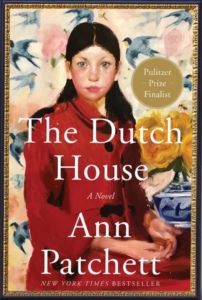 If a book doesn’t draw me in by the third chapter, I won’t waste any more time on it. There are too many books to read and not enough leisure hours in my day. Even so, there are books I finish but soon forget. Then there’s The Dutch House. I first picked this book up because it takes place in a town where I went to college and later lived for several decades. But I kept reading because the author is so adept at crafting both characters and plot.
If a book doesn’t draw me in by the third chapter, I won’t waste any more time on it. There are too many books to read and not enough leisure hours in my day. Even so, there are books I finish but soon forget. Then there’s The Dutch House. I first picked this book up because it takes place in a town where I went to college and later lived for several decades. But I kept reading because the author is so adept at crafting both characters and plot.
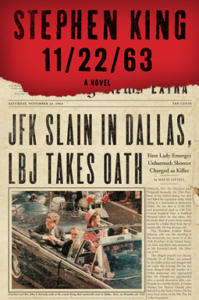 I bought this book several years ago but just got around to reading it this summer. At 880 pages, it’s quite intimidating and requires a huge commitment of time. Because I don’t care for horror stories, I’d never read anything by King other than his book on writing. However, I’m old enough to remember the day Kennedy was shot, and the concept about a man who goes back in time to prevent the assassination fascinated me. I flew through it, unable to put the book down until my eyelids grew heavy each night.
I bought this book several years ago but just got around to reading it this summer. At 880 pages, it’s quite intimidating and requires a huge commitment of time. Because I don’t care for horror stories, I’d never read anything by King other than his book on writing. However, I’m old enough to remember the day Kennedy was shot, and the concept about a man who goes back in time to prevent the assassination fascinated me. I flew through it, unable to put the book down until my eyelids grew heavy each night.
The Colony Club by Shelley Noble
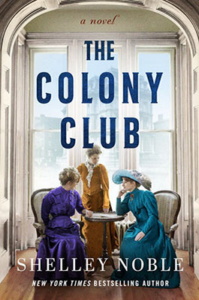 Disclaimer: the author is a dear friend, and I was lucky enough to read this book prior to publication. Daisy Harriman, one of the main characters in the book, was a real person. When she requested a room for the night at the Waldorf Hotel, she was turned away because she wasn’t accompanied by her husband. Appalled by her treatment, she set out to change history, creating The Colony Club, the first woman’s club of its kind in not only New York but the world. The novel also incorporates other historical people of the Gilded Age, including Stanford White, who designed the building, and actress-turned-interior designer Elsie de Wolfe, who decorated the Colony Club’s rooms. The author is a meticulous historian who creates a richly accurate depiction of the times, especially in the treated of women, making the book extremely au courant for today’s readers.
Disclaimer: the author is a dear friend, and I was lucky enough to read this book prior to publication. Daisy Harriman, one of the main characters in the book, was a real person. When she requested a room for the night at the Waldorf Hotel, she was turned away because she wasn’t accompanied by her husband. Appalled by her treatment, she set out to change history, creating The Colony Club, the first woman’s club of its kind in not only New York but the world. The novel also incorporates other historical people of the Gilded Age, including Stanford White, who designed the building, and actress-turned-interior designer Elsie de Wolfe, who decorated the Colony Club’s rooms. The author is a meticulous historian who creates a richly accurate depiction of the times, especially in the treated of women, making the book extremely au courant for today’s readers.
What’s on your nightstand? Post a comment for a chance to win a promo code for a free download of any one of the first ten audiobooks in my Anastasia Pollack Crafting Mystery Series.
~*~
USA Today and Amazon bestselling and award-winning author Lois Winston writes mystery, romance, romantic suspense, chick lit, women’s fiction, children’s chapter books. Kirkus Reviews dubbed her critically acclaimed Anastasia Pollack Crafting Mystery series, “North Jersey’s more mature answer to Stephanie Plum.” In addition, Lois is a former literary agent and an award-winning craft and needlework designer who often draws much of her source material for both her characters and plots from her experiences in the crafts industry. Learn more about Lois and her books at her website www.loiswinston.com where you can also sign up for her newsletter and follow her on various social media sites.

 Let’s talk titles – not king, queen and my personal favourite, goddess – but the titles that alert readers to what is about to unfold before their eyes.
Let’s talk titles – not king, queen and my personal favourite, goddess – but the titles that alert readers to what is about to unfold before their eyes.

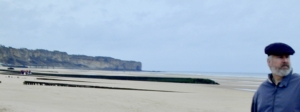
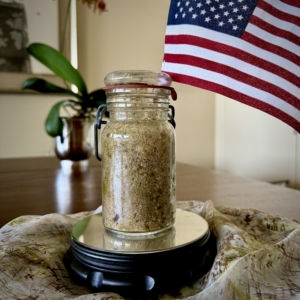 As he does every year, last weekend my husband took a sealed jar of sand from the shelf and set it out on a table to commemorate those long-gone soldiers and their unimaginable courage. It’s the sand we had gathered from the beach in Normandy. It still looks as it did in 1999.
As he does every year, last weekend my husband took a sealed jar of sand from the shelf and set it out on a table to commemorate those long-gone soldiers and their unimaginable courage. It’s the sand we had gathered from the beach in Normandy. It still looks as it did in 1999.
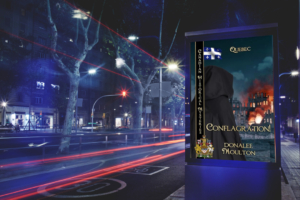 About The Book
About The Book